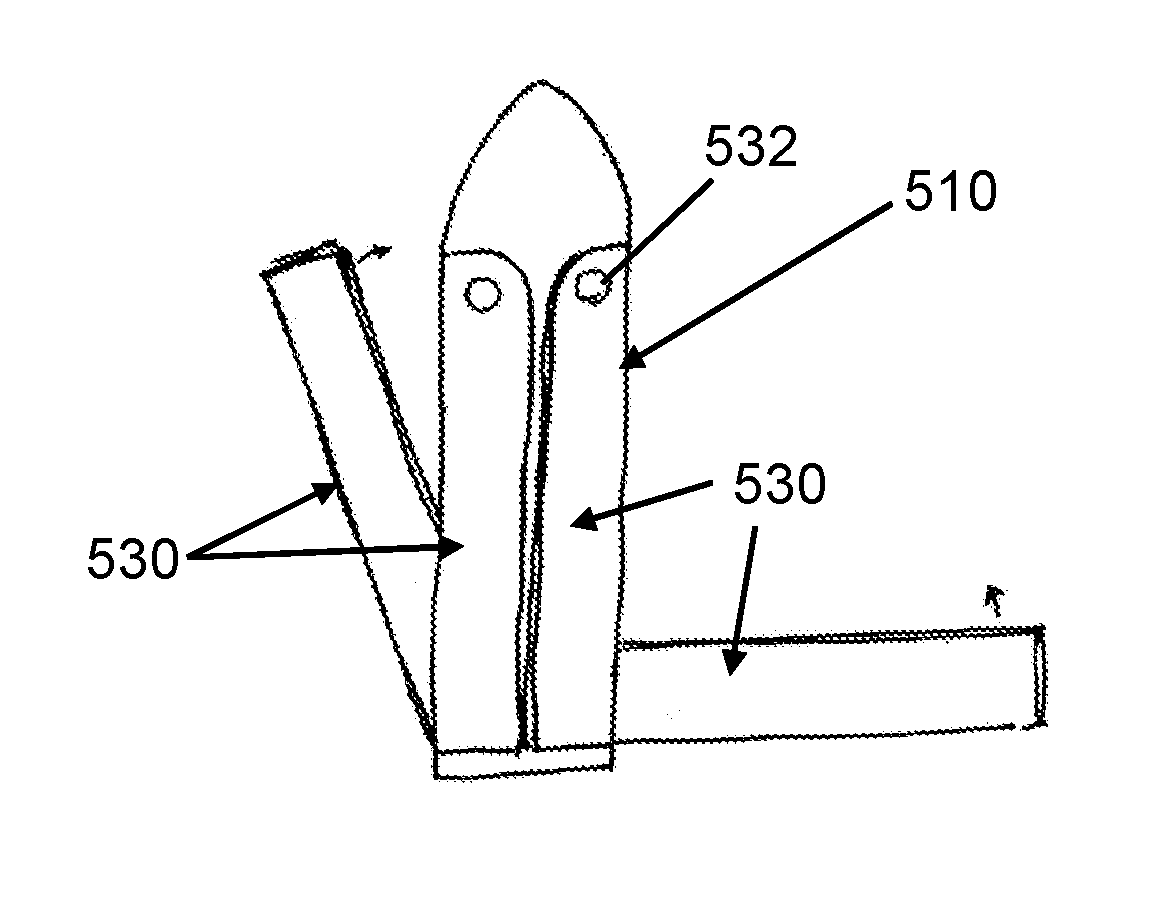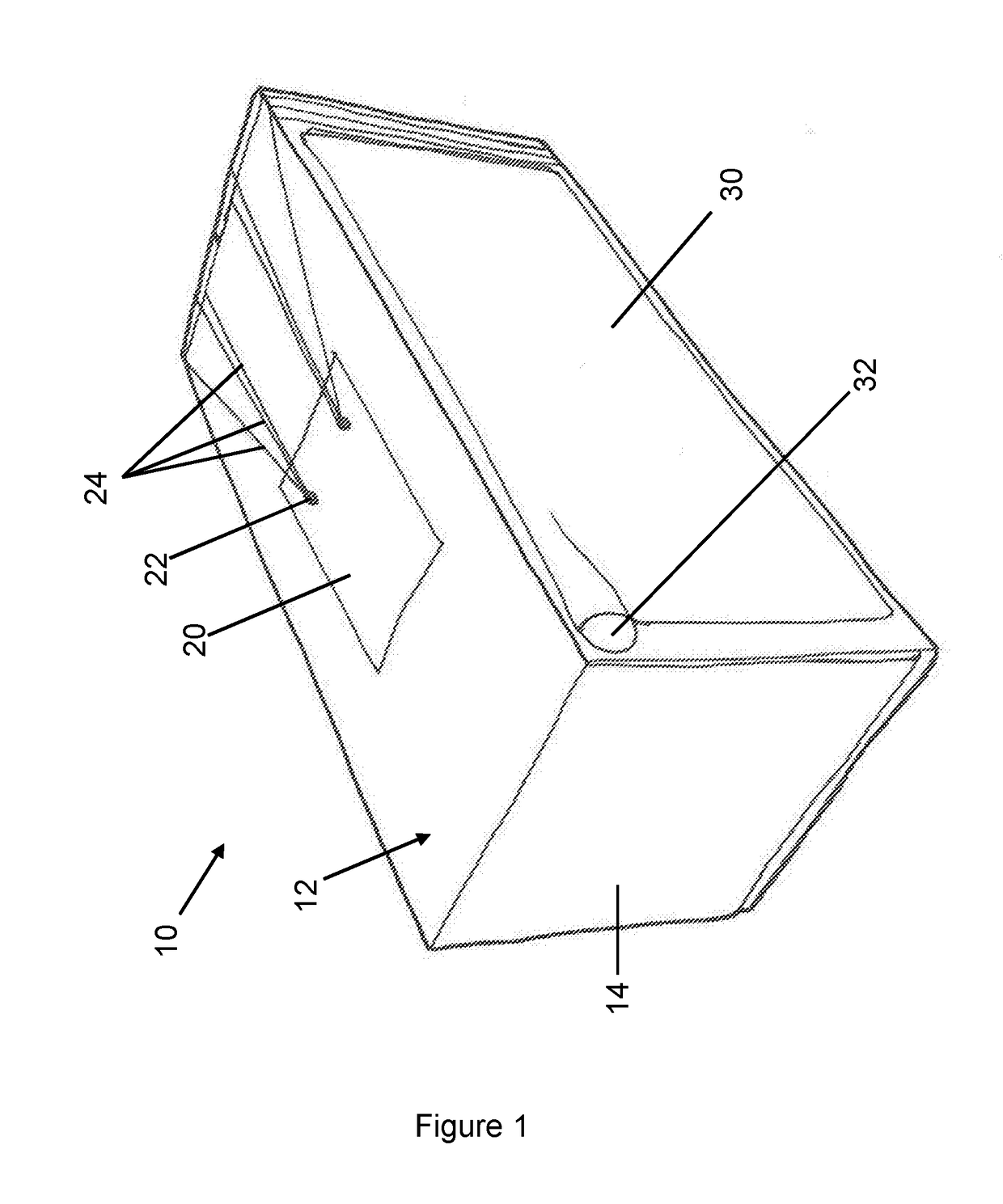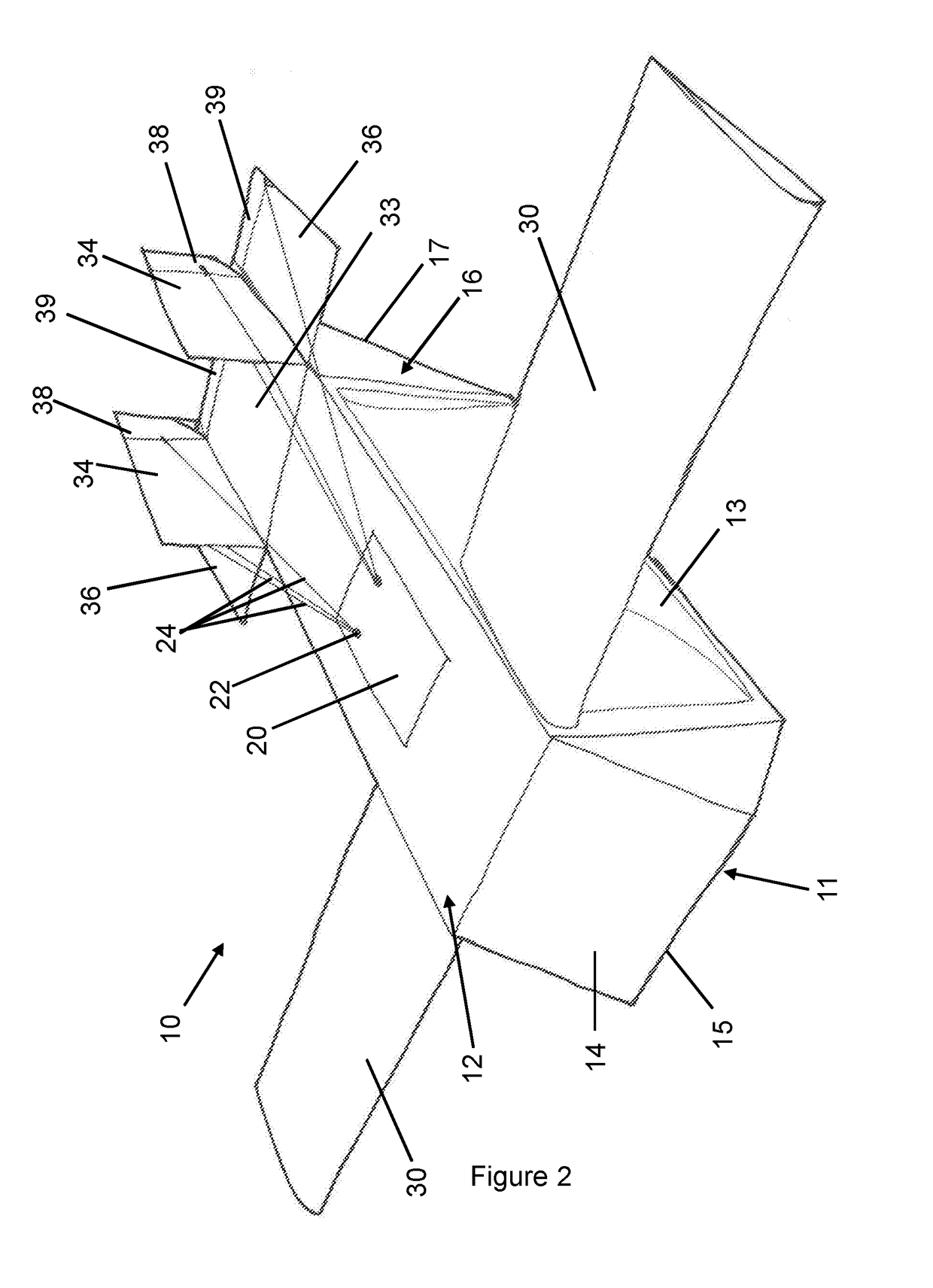Aerial Delivery Assembly
a technology for delivering assemblies and aircraft, which is applied in the direction of gliders, transportation and packaging, fuselages, etc., can solve the problems of many limitations, slow and/or dangerous delivery by land, and not always a viable option for delivery by land, so as to reduce the risk of damage, facilitate the process of reprogram, and mitigate or eliminate the error
- Summary
- Abstract
- Description
- Claims
- Application Information
AI Technical Summary
Benefits of technology
Problems solved by technology
Method used
Image
Examples
first embodiment
[0070]the invention is shown in FIGS. 1 and 2 in the form of a glider 10. FIGS. 1 and 2 depict the glider 10 in a collapsed (or stowed) configuration and a deployed configuration, respectively. The glider 10 acts as a means by which goods can be delivered to a target located easily and at a low cost, as will be explained below. The glider 10 is initially stored in the collapsed configuration shown in FIG. 1 so that it can be efficiently packed, or stacked together with other such gliders, for example. The size of the glider in the collapsed configuration shown in FIG. 1 is approximately 500 mm×500 mm×1200 mm. When the glider is launched, it automatically deploys (as will be discussed in detail, below) into the deployed configuration shown in FIG. 2 thus providing all of the required components to allow the efficient aerial delivery of the goods stored within the glider 10.
[0071]In this embodiment, the glider 10 comprises an airframe, the airframe being formed from corrugated cardboa...
third embodiment
[0111]the invention is shown in FIGS. 6 and 7. The aircraft 210 of this embodiment has a similar basic structure to the previous embodiments in that it comprises a main body 212, wings 230a, 230b, a tail section 216, a hold for goods (not visible), a control unit and linkages. The main differences between this aircraft 210 and the gliders 10, 110 of the previous embodiments are the provision of propulsion means in the form of a deployable propeller 211, an internally mounted control unit (not visible), internally mounted linkages (not visible) and the wing 230a, 230b structure.
[0112]The control unit in this embodiment is housed within the main body 212 of the airframe so that it is not visible in normal use. It can be inserted into and removed from the main body via an access panel (not visible). Linkages extend from the control unit to the control surfaces and the wing deployment mechanisms internally, within the airframe. This reduces the risk of a linkage becoming snagged or dama...
PUM
 Login to View More
Login to View More Abstract
Description
Claims
Application Information
 Login to View More
Login to View More - R&D
- Intellectual Property
- Life Sciences
- Materials
- Tech Scout
- Unparalleled Data Quality
- Higher Quality Content
- 60% Fewer Hallucinations
Browse by: Latest US Patents, China's latest patents, Technical Efficacy Thesaurus, Application Domain, Technology Topic, Popular Technical Reports.
© 2025 PatSnap. All rights reserved.Legal|Privacy policy|Modern Slavery Act Transparency Statement|Sitemap|About US| Contact US: help@patsnap.com



